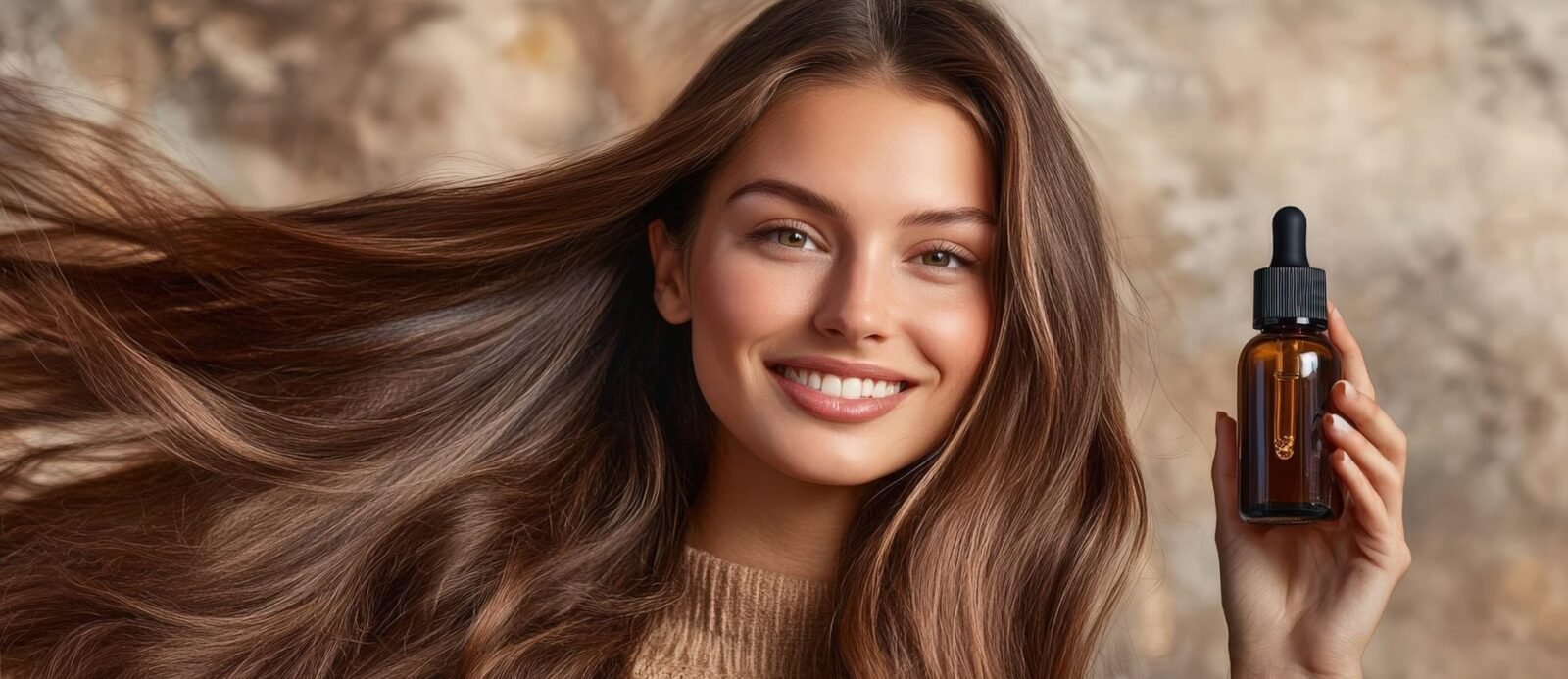As consumer demands evolve, the skincare industry continues to innovate—merging biotechnology, sustainability, and sensorial performance. In 2025, formulation trends are being shaped not only by efficacy but also by transparency, ethical sourcing, and regulatory adaptation. For chemists, marketers, and product developers, staying ahead of these trends is essential for maintaining relevance and competitive advantage.
Below are the seven key formulation directions defining next-generation skincare in 2025—each supported by real science and emerging consumer behavior.
1. Biotech-Driven Actives: Precision Innovation for Sustainable Beauty
Biotechnology has become one of the most transformative forces in modern formulation. Instead of relying solely on traditional plant extracts or synthetic copies, today’s innovators are using precision bioengineering to design molecules that deliver superior results with minimal environmental impact.
Examples include:
- Plant-derived exosomes that enhance cell communication and skin repair
- Biomimetic peptides designed to stimulate collagen synthesis and barrier regeneration
- Fermentation-derived postbiotics that strengthen the microbiome and reduce inflammation
These biofunctional actives are reshaping the ingredient landscape. Because they are produced via controlled fermentation or cellular culture rather than large-scale extraction, they minimize land use and chemical waste while offering unmatched reproducibility.
According to a 2024 report by Mintel Beauty & Personal Care, biotech-derived actives now appear in 35% of new skincare launches globally—a 60% increase compared to 2020. This surge confirms that biotechnology is no longer niche; it is the new standard of sustainable innovation.
Moreover, advances in synthetic biology allow for the creation of DNA-inspired molecules like vegan PDRN and nucleotide complexes that replicate the regenerative power of marine actives—without the ethical or environmental drawbacks. As a result, biotech ingredients provide both marketing value and real scientific depth.
2. Waterless and Low-Water Formulas: Sustainability Meets Performance
As the climate crisis intensifies, sustainability is not just a value—it is a necessity. One of the most effective ways brands are addressing this challenge is by reducing water dependency in formulations. Waterless and low-water systems concentrate active ingredients, extend shelf life, and reduce transportation weight and packaging.
Popular formats include:
- Balms and concentrated oil sticks
- Powder-to-foam cleansers and tablets-to-serum systems
- Solid shampoo and conditioner bars
Beyond sustainability, these products offer superior stability and sensory appeal. For example, waterless systems significantly reduce microbial risk, allowing formulators to lower preservative levels and claim cleaner labels. Additionally, concentrated formats require less packaging and enable consumers to travel light without sacrificing efficacy.
According to the Cosmetics Europe 2024 Sustainability Survey, 52% of consumers are actively seeking products with minimal water content or refillable systems. As water scarcity grows, this number is expected to rise sharply over the next five years.
For chemists, however, this trend introduces new formulation challenges. They must redesign emulsions and delivery systems to function effectively in anhydrous bases while maintaining smooth texture and stability. Advanced bio-based emulsifiers, natural waxes, and microencapsulation techniques are now critical tools for balancing performance and sustainability in water-free skincare.
3. Microbiome-Friendly Formulations: Supporting Skin Ecology from Within
The concept of the skin microbiome—once limited to research—has now entered the mainstream of cosmetic science. Consumers increasingly understand that balanced skin flora equates to stronger, healthier skin. As a result, formulators are prioritizing microbiome integrity by avoiding harsh preservatives and surfactants while introducing pre-, pro-, and postbiotic ingredients.
Common microbiome-focused actives include:
- Prebiotics such as inulin, alpha-glucan oligosaccharide, and fructooligosaccharides
- Postbiotics like Lactobacillus ferment filtrate or Bifida lysate
- Mild antimicrobials that maintain balance without stripping beneficial bacteria
Moreover, many brands now conduct in vivo microbiome testing to support claims like “microbiome-safe” or “barrier-supporting.” Research from the International Journal of Cosmetic Science confirms that postbiotic ferments can improve hydration and reduce irritation in sensitive skin by promoting microbial balance.
This approach aligns with the broader “skin health” philosophy replacing traditional anti-aging narratives. Instead of fighting the skin, brands aim to cooperate with it—reinforcing resilience through biological balance.
Formulators must now carefully evaluate preservatives, emulsifiers, and surfactants to avoid disruption of the skin’s flora. Consequently, microbiome-friendly systems are driving innovation in ingredient selection and testing methodologies across the entire supply chain.
4. Multifunctional Minimalism: When Less Is Truly More
The “skinimalism” movement—born from pandemic-era simplicity—has evolved into a sophisticated formulation philosophy. Consumers still want fewer products, yet they demand more from each one. Therefore, chemists are creating hybrid formulations that combine multiple benefits in a single step without compromising safety or efficacy.
Examples include:
- Serums that exfoliate, brighten, and hydrate simultaneously
- Moisturizers combining barrier repair, anti-aging peptides, and SPF protection
- Eye creams that lift, depuff, and illuminate in one gesture
To achieve this, brands rely on smart encapsulation and stabilized complexes that allow multiple actives to coexist without degradation. The result is streamlined routines that save time while maintaining professional-grade performance.
Furthermore, this minimalist trend pairs perfectly with clean beauty values. By reducing the number of products, consumers reduce packaging waste and ingredient exposure—aligning wellness, sustainability, and convenience.
In 2025, “multifunctional minimalism” is not just a trend—it’s becoming a standard expectation for new product development.
5. Next-Generation Encapsulation Systems: Smarter Delivery, Stronger Results
Encapsulation remains one of the most dynamic frontiers in cosmetic chemistry. As actives grow more sensitive and complex, traditional emulsions can no longer provide the protection or targeted delivery required. Consequently, nanocarrier and microcapsule systems have become essential for stabilizing actives and optimizing their bioavailability.
The main encapsulation technologies include:
- Lipid vesicles (liposomes, niosomes) that mimic biological membranes
- Polymeric or biopolymer microcapsules for slow, controlled release
- SNEDDS (Self-Nano-Emulsifying Drug Delivery Systems) for enhanced penetration
- Hydrogel-based carriers that maintain hydration while delivering actives gradually
Research from the Journal of Nanobiotechnology shows that encapsulated vitamin C retains 80% of its activity after 30 days, compared to only 20% for non-encapsulated forms. Moreover, encapsulation allows formulators to combine previously incompatible actives—such as acids and peptides—within the same product.
Because of this versatility, encapsulation now underpins innovation in anti-aging, brightening, and barrier-repair categories. In addition, new biodegradable encapsulants derived from algae polysaccharides and plant lipids offer sustainable alternatives to synthetic polymers, further aligning science with environmental goals.
6. Clinically Supported Claims and Testing: Proof as the New Marketing Currency
The phrase “clinically proven” once served as a marketing buzzword. Today, it’s a regulatory expectation and a competitive necessity. As consumers become more educated and regulations tighten, brands must back their claims with measurable data.
Modern clinical validation combines several complementary approaches:
- In vitro testing on cell cultures to establish biological activity
- In vivo studies for visible, quantifiable skin improvements
- Consumer perception evaluations to assess sensory experience
- Instrumental measurements such as TEWL (transepidermal water loss), corneometry, and cutometry
Furthermore, high-resolution imaging and AI-driven skin analysis are transforming claim substantiation. Brands now use 3D optical scanning to measure wrinkle depth and hydration changes over time.
According to Frontiers in Pharmacology, consumer trust correlates directly with visible clinical proof. In other words, brands with data-backed actives achieve higher consumer loyalty and lower product return rates.
Formulators and marketers should therefore collaborate early in development to design testable prototypes that align with target claims. By integrating testing into formulation strategy—not as an afterthought—brands can achieve both regulatory compliance and marketing credibility.
7. Compliance-First Formulating: Navigating MoCRA and Global Standards
The rollout of the Modernization of Cosmetics Regulation Act (MoCRA) has redefined how U.S. brands approach formulation. Unlike previous decades, compliance is no longer optional—it’s a core pillar of product development.
To remain compliant, formulators must:
- Avoid restricted or prohibited ingredients
- Use only FDA-permitted colorants and preservatives
- Maintain detailed documentation (COA, SDS, IFRA, allergen, traceability sheets)
- Register all products and facilities with the FDA
Additionally, ingredient traceability and global harmonization are now top priorities. Multinational brands must ensure compatibility across U.S., EU, China, and GCC markets to avoid reformulation delays.
This shift encourages chemists to adopt compliance-first formulation—choosing raw materials already pre-validated for international acceptance. The approach not only reduces regulatory risk but also accelerates market entry and builds consumer trust.
Furthermore, the industry is embracing AI-powered regulatory tracking systems that monitor ingredient updates and automatically flag non-compliant formulas. This integration of digital tools into compliance workflows reflects the industry’s growing emphasis on accountability and transparency.
The Connected Future: How These Trends Converge
Each of these seven directions—biotech actives, waterless design, microbiome focus, multifunctional minimalism, smart encapsulation, clinical validation, and compliance-first formulating—does not stand alone. Instead, they represent a unified shift toward intelligent, sustainable beauty science.
Together, these innovations form a new ecosystem of formulation where performance, safety, and transparency coexist. For instance, a biotech-derived peptide encapsulated in a biodegradable carrier could appear in a waterless, microbiome-safe serum backed by in vivo testing and MoCRA-compliant documentation. This type of formula exemplifies the 2025 ideal: performance with purpose.
In addition, digitalization is enhancing collaboration between chemists, suppliers, and regulatory teams. Cloud-based R&D platforms and AI modeling now allow formulators to predict stability, compatibility, and performance before physical prototyping—saving time and resources.
The next phase of skincare will not be defined by isolated ingredients but by synergistic systems that combine biotech, delivery, testing, and compliance into one cohesive design.
Final Thoughts: The Era of Conscious, Science-Driven Beauty
The skincare industry of 2025 is not just evolving—it’s maturing. The conversation has shifted from “What’s new?” to “What works, safely and sustainably?” From biotech actives to waterless systems and microbiome balance, innovation is rooted in evidence rather than aesthetics.
For formulators, the goal is clear: create products that deliver measurable results while honoring ethical, environmental, and regulatory standards. For consumers, transparency and traceability have become the true markers of trust.
Ultimately, the brands that thrive will be those that merge science with integrity—bridging the gap between advanced biotechnology and everyday self-care. The future of skincare is intelligent, conscious, and profoundly human.






